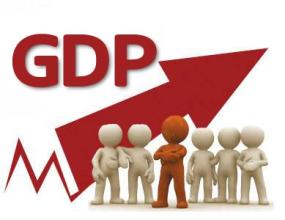At 48% South Africa has one of the highest debt as a percentage of GDP among emerging market economies, according to an Allianz Global Wealth report.
South Africa's debt per capita stands at R31 856 (€2 070) – which is significantly higher than the average of other emerging markets at R24 777 (€1 610).
"In Latin America or Eastern Europe, for example, no country can match South Africa in this regard.
The Allianz Global Wealth report – the seventh of its kind – puts the asset and debt situation of households in more than 50 countries under the microscope. Based on the findings of the report, it seems that the good years are a thing of the past.
Global financial assets increased by only 4.9% in 2015, slightly above the growth rate of economic activity. In the three previous years, financial assets grew at twice that pace, with an average rate of 9%.
In South Africa, asset growth however slowed down – from 9.3% in 2014 to 3.7% in 2015. "After years of bumper growth, 2015 oversaw the smallest increase in wealth since 2008," the report said.
South Africa's liabilities, however, increased by 5.7% – slightly faster than the previous year. "Although debt growth has dropped a notch or two after the financial crisis, in the last years it continued to grow steadily and as a consequence the debt pile has doubled since 2007."
With regard to net financial assets per capita, South Africa ranked 39th globally with financial assets per capita valued at R90 647 (€5 890) – behind Mexico, but ahead of Russia or Turkey. It has slipped by three places compared to 2000.
According to Allianz, Scandinavian and Asian countries currently dominate the net financial assets per capita list.
Globally, the wealth report shows a mixed picture. The strong growth in emerging markets in recent years boosted economic participation among people and created a new middle class and in tandem with this, poverty levels have dropped significantly.
The growth in financial assets in industrial countries, such as in Western Europe (3.2%) and the United States (2.4%) has slowed down and has more than halved in 2015.
At the other end of the spectrum is Asia (excluding Japan, however) where financial assets expanded by 14.8%. The region's lead over the rest of the world is only getting bigger. This also applies to the world's other two up-and-coming regions Latin America and Eastern Europe where the average growth was only half of that in Asia.
"The days in which regions were able to keep up with their counterparts in Asia are long gone," the report said.
Michael Heise, chief economist at Allianz, said the growth of financial assets have reached a critical juncture. "Extreme monetary policy is losing its impact even on asset prices. At the same time, interest rates continue their remorseless slide, deep into negative territory. For savers, the outlook is not rosy," Heise said.
Source: Fin24
South Africa

